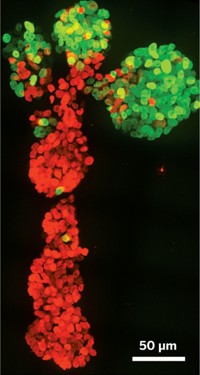Advertisement
Grab your lab coat. Let's get started
Welcome!
Welcome!
Create an account below to get 6 C&EN articles per month, receive newsletters and more - all free.
It seems this is your first time logging in online. Please enter the following information to continue.
As an ACS member you automatically get access to this site. All we need is few more details to create your reading experience.
Not you? Sign in with a different account.
Not you? Sign in with a different account.
ERROR 1
ERROR 1
ERROR 2
ERROR 2
ERROR 2
ERROR 2
ERROR 2
Password and Confirm password must match.
If you have an ACS member number, please enter it here so we can link this account to your membership. (optional)
ERROR 2
ACS values your privacy. By submitting your information, you are gaining access to C&EN and subscribing to our weekly newsletter. We use the information you provide to make your reading experience better, and we will never sell your data to third party members.
Microfluidics
Molded microfluidic device makes gel “apartments” for single cells
Hydrogel device allows localized treatment and analysis of 10,000 individual cells at a time
by Fernando Gomollón-Bel, special to C&EN
February 25, 2020

A new microfluidic device that traps individual cells in microscopic hydrogel “apartments” allows the cells to be individually treated and analyzed much more readily than with previous devices (Anal. Chem. 2020, DOI: 10.1021/acs.analchem.9b05099).
Benjamin B. Yellen, a materials scientist at Duke University who led the study, says the device could find a myriad of applications, whether testing individual cells’ response to drugs or performing genetic analysis in drug-resistant cells, he says.
To create the array of tiny cell apartments, Yellen and his colleagues first placed a polydimethylsiloxane (PDMS) mold outlining 10,000 interconnected, crescent-shaped compartments, each about 0.5 mm across, on top of a silicon chip. They then injected a stream of cells that became trapped individually in each of the compartments. To fix the cells in the array, the researchers flowed a solution of biocompatible hydrogel through the mold, let it cure around the cells, and then peeled off the mold. The device is open on the top, allowing access to the cells for genomic modifications or for printing biochemical reagents such as fluorescent dyes onto individual apartments, says study coauthor Ying Li, a biochemist at the Chinese Academy of Sciences’s Wuhan Institute of Physics and Mathematics.

The method was able to trap single human cells in 80% of the apartments on the chip. Each dwelling can be easily identified through a microscope thanks to street and apartment numbers embossed in the polymer mold, corresponding to row and column.
The researchers demonstrated the advantages of the device’s top access by delivering a labeled DNA sequence to cells in the array and showing they could selectively illuminate cells carrying a certain gene. The team also amplified the genomes of individual cells in parallel to show that the cells’ genes could be analyzed efficiently, Li says. This technique could allow researchers to identify drug-resistant cells from patient biopsy samples, for example, and then identify differences in the cells’ gene sequences relative to the patient’s healthy cells.
Katherine Elvira, an expert in microfluidics at the University of Victoria who was not involved in the study, loves the idea of using PDMS as a mold for curing the hydrogel, and that the lid can then be peeled off. Unlike other methods, this allows direct access to cells once they are loaded into a device, but this new technique “means we can analyze each individual cell to see what makes it different,” she says. “This will give us a better understanding of diseases, aging, drug response, and much more.”





Join the conversation
Contact the reporter
Submit a Letter to the Editor for publication
Engage with us on Twitter